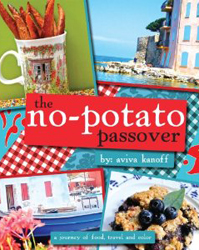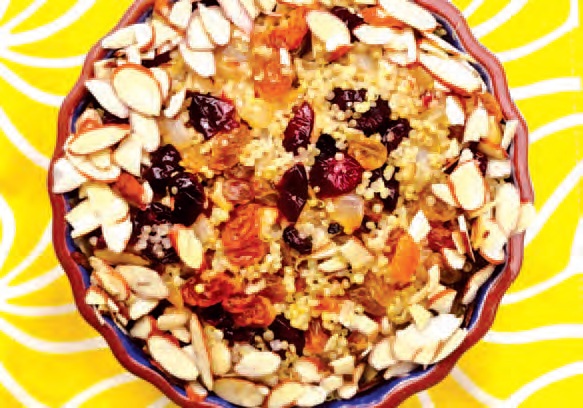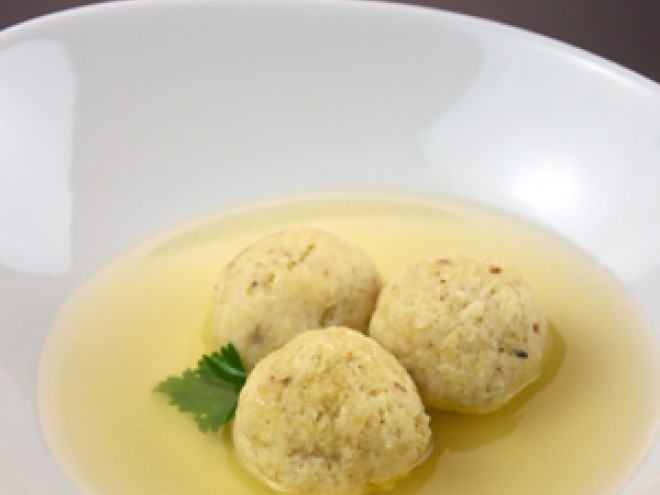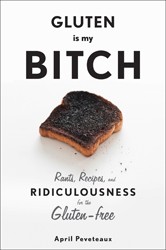 By now, most people have heard of quinoa, the superfood. With plenty of fiber, protein and vitamins it sounds like a super idea. The problem arises when the time comes to actually prepare this somewhat unfamiliar item and poses a special problem during the upcoming holiday of Passover. Jewish people tend to favor foods from their particular part of the Diaspora during these eight days. And really, how many Jews are actually from Bolivia? But never fear, we Jews are a glorious melting pot! We may have been kicked out of many places but we wind up taking the menus with us.
By now, most people have heard of quinoa, the superfood. With plenty of fiber, protein and vitamins it sounds like a super idea. The problem arises when the time comes to actually prepare this somewhat unfamiliar item and poses a special problem during the upcoming holiday of Passover. Jewish people tend to favor foods from their particular part of the Diaspora during these eight days. And really, how many Jews are actually from Bolivia? But never fear, we Jews are a glorious melting pot! We may have been kicked out of many places but we wind up taking the menus with us.
Quin-what?
I have recently traveled around the country to do cooking demonstrations in response to my new book, The No-Potato Passover, and I have found that people have a fear and mistrust of this simple Bolivian staple.
But what exactly is quinoa?Is it a grain? A seed? A vegetable? Help!
Quinoa (pronounced “keen-whah”) is often mistaken for a grain, but it’s actually a seed — one that originated thousands of years ago in the Andes Mountains. Dubbed “the gold of the Incas,” it’s treasured because of it’s nutritive value. Quinoa actually has more protein than any other grain or seed and offers a complete protein, meaning it contains all the essential amino acids our bodies can’t make on their own. It’s also a great source of calcium and is high in lysine, the B vitamins and iron. To top it off, the seed is easy to digest and gluten free! If you are counting carbs or just want to eat healthier quinoa is your new best friend.
Why has this tiny seed brought forth such huge confusion?
Ingredients:
• 1 cup red quinoa
• 1 cup slivered almonds
• 1 cup white quinoa
• 5 – 6 medium mushrooms, chopped
• 1 cup golden raisins
• 1 Vidalia onion, diced
• 1 cup Craisins
• 2 tbsp. canola oil
• salt and pepper to taste
Directions:
1. Cook quinoa according to package.
2. In a separate skillet, sauté onions in canola oil until golden brown.
3. Add chopped mushrooms and sauté for one minute.
4. Add raisins, craisins and almonds, and sauté for another minute.
5. When quinoa is ready, add to pan and mix with other ingredients.
6. Add salt and pepper to taste.
Recipe from The No Potato Passover (Brio Books; 2012 Hardcover $29.95)
Aviva Kanoff paints, teaches a mixed media art class, and dabbles in photography. Her creative approach to life led her to artistic experimentation with food, and after years of creating her own recipes and working as a personal chef, she wrote The No-Potato Passover.
Aviva Kanoffpaints, teaches a mixed media art class, and dabbles in photography. Her creative approach to life led her to artistic experimentation with food, and after years of creating her own recipes and working as a personal chef, she wrote The No-Potato Passover.



